Table of Contents
Introduction
Ras Al Khaimah, a gem in the United Arab Emirates, offers a unique blend of breathtaking natural landscapes, rich cultural heritage, and thrilling adventure activities. Whether you’re seeking relaxation on pristine beaches, historical explorations, or adrenaline-pumping adventures, Ras Al Khaimah has something for everyone. Here are 7 Things to Do in Ras Al Khaimah that promise an unforgettable experience.
Things To Do in Ras Al Khaimah
1. Explore Jabal Al Jais Mountain
Jebel Jais Mountain, the crowning jewel of the UAE’ Ras Al Khaimah, stands as the tallest peak in the country, offering visitors an unparalleled blend of natural beauty, adventure, and tranquility. The mountain’s peak reaches approximately 1,934 meters (6,345 feet) above sea level. This majestic mountain, part of the Hajar range, not only boasts breathtaking landscapes and panoramic views but also serves as a hub for thrilling activities and serene moments alike. Its unique ecosystem, cooler climate, and accessible location makes it amoung the top things to do in ras al khaimah for both adventure seekers and those looking to escape the hustle and bustle of city life.
Top Attractions at Jebel Jais Mountain
Jebel Jais Flight – The World’s Longest Zipline: Thrill-seekers can experience the exhilaration of flying over the stunning mountainous terrain at speeds of up to 120 km/h on the world’s longest zipline. This record-breaking adventure stretches for nearly 3 km, offering unparalleled views and an unforgettable rush.
Viewing Deck Park: The Viewing Deck Park provides visitors with spectacular vistas of the Hajar Mountains and the surrounding valleys. Equipped with telescopes, it’s the perfect spot for photography enthusiasts and nature lovers to capture the beauty of the area or simply enjoy a tranquil sunset.
Hiking Trails: Jebel Jais offers a variety of hiking trails for all levels of experience. From leisurely walks to challenging treks, these trails wind through the rugged terrain, offering hikers the chance to explore the mountain’s natural beauty up close.
Jais Sky Tour: For those looking for adventure with a bit less adrenaline than the zipline, the Jais Sky Tour offers a series of thrilling zipline flights that glide from platform to platform, showcasing the mountain’s stunning landscapes from different perspectives.
Jais Adventure Peak: Home to the Jais Sky Maze and the Jais Sky Tour, the Adventure Peak is an adventure center where visitors can challenge themselves with obstacle courses high above the ground, adding a dose of adventure to the natural beauty of Jebel Jais.
The Jais Sledder: A recent addition to Jebel Jais’ attractions is the Jais Sledder, the region’s longest toboggan ride, offering a unique downhill experience through the mountains’ winding paths.
How to Get There
Jebel Jais is located in the emirate of Ras Al Khaimah, approximately a 2-hour drive from Dubai. The journey itself is part of the experience, with the road to Jebel Jais being as scenic as the destination. Visitors can reach Jebel Jais by car, following the well-signed roads leading directly to the mountain.
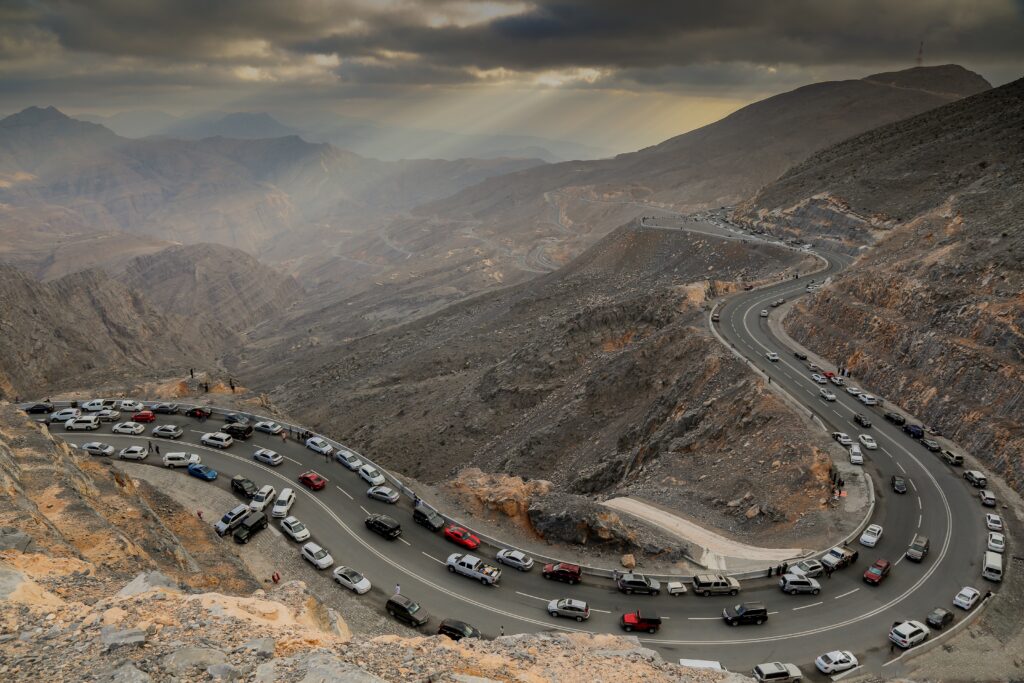
2. Visit the National Museum of Ras Al Khaimah
The National Museum of Ras Al Khaimah stands as a testament to the rich tapestry of history, culture, and tradition that defines this enchanting part of the UAE. Nestled in the heart of Ras Al Khaimah city, the museum is housed in a fort that was originally the residence of the ruling family until 1964. This historic fort, with its strategic location overlooking the creek, has been meticulously restored and transformed into a cultural beacon, inviting visitors to explore the emirate’s heritage from ancient times through to the present day.
Top Attractions at the National Museum of Ras Al Khaimah
Traditional Architecture: The museum itself, with its traditional Gulf architecture, is a major attraction. Its walls and towers, built with coral stones, mud, and mortar, tell the story of the region’s architectural evolution and the ingenuity of its people in creating sustainable habitats in challenging environments.
Archaeological Exhibits: The museum boasts an extensive collection of archaeological finds from various sites around the emirate. These artifacts, which include tools, pottery, jewelry, and weapons, offer insights into the daily lives of the inhabitants of the region from the Stone Age through to the Islamic era.
Ethnographic Displays: The ethnographic section showcases the traditional ways of life in Ras Al Khaimah, with exhibits on pearl diving, agriculture, fishing, and date farming. This section highlights the emirate’s economic and social transformations over the centuries and provides a glimpse into the crafts and industries that have sustained its people.
Maritime Heritage: Given Ras Al Khaimah’s historical significance as a maritime center, the museum dedicates a special section to its seafaring heritage. Here, visitors can learn about the dhow-building industry, navigation techniques, and the pearl diving that once formed the backbone of the region’s economy.
The Qawasim Room: This room is dedicated to the ruling family of Ras Al Khaimah, the Qawasims. It features manuscripts, documents, and personal belongings of the royal family, offering a unique perspective on the political history of the region.
Natural History Section: The museum also includes a natural history section, where visitors can discover the flora, fauna, and geology of the region. This section emphasizes the biodiversity of Ras Al Khaimah and the conservation efforts to preserve its unique ecosystems.
Visiting Tips
- The museum is open from Saturday to Thursday, with Friday afternoons also available. It’s advisable to check the latest opening times before visiting.
- A nominal entry fee is charged, which goes towards the preservation of the museum and its collections.
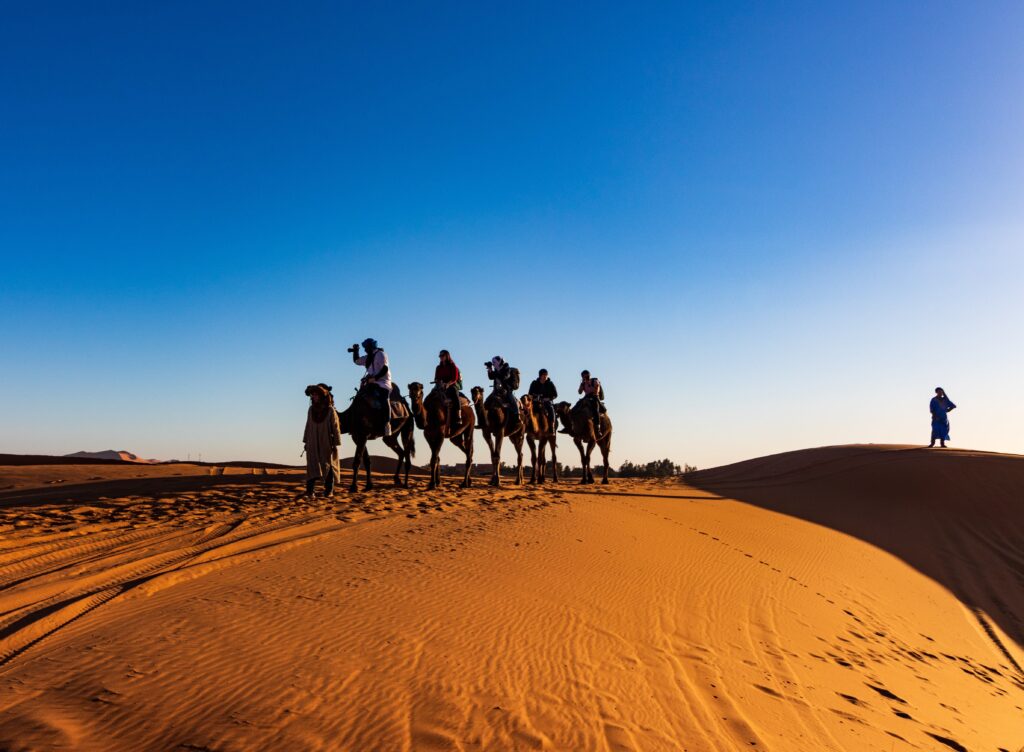
3. Relax at the Al Hamra Beach
Al Hamra Beach in Ras Al Khaimah is a pristine stretch of shoreline that epitomizes the serene beauty and luxurious leisure experiences. Nestled along the Arabian Gulf’s sparkling waters, this beach is part of the Al Hamra Village, a master-planned development that includes residential areas, hotels, and a marina, making it a comprehensive destination for both relaxation and adventure. Its crystal-clear waters, white sandy beaches, and the backdrop of lush landscapes provide a tranquil escape from the bustling city life.
Top Attractions at Al Hamra Beach
Luxury Resorts and Hotels: Al Hamra Beach is home to several luxurious resorts and hotels, offering world-class amenities and services. These establishments provide direct beach access, spa services, fine dining restaurants, and a variety of water sports, ensuring a comfortable and indulgent stay.
Al Hamra Marina and Yacht Club: The marina is a haven for sailing enthusiasts and a picturesque spot for visitors. It offers yacht charter services, sailing lessons, and the opportunity to explore the Arabian Gulf’s azure waters. The Yacht Club, with its sophisticated ambiance, is perfect for dining and enjoying the panoramic views of the marina.
Water Sports: The calm waters of Al Hamra Beach are ideal for a variety of water sports, including kayaking, paddleboarding, and jet skiing. Several outlets along the beach offer equipment rentals and lessons for both beginners and experienced enthusiasts.
Al Hamra Golf Club: Just a short distance from the beach, this 18-hole championship golf course offers golfers of all skill levels a challenging and scenic experience. The course is beautifully landscaped and integrates natural lagoons, adding to its charm.
Shopping and Dining: Al Hamra Mall, located within the vicinity, provides a diverse shopping experience with a mix of international and local brands. The area also boasts a wide range of dining options, from casual eateries to fine dining restaurants, offering local and international cuisines.
4. Take an Adventure in the Desert
Adventure in the Desert of Ras Al Khaimah presents an enchanting world of endless dunes, traditional Bedouin culture, and thrilling activities that offer a unique glimpse into the heart of the Arabian wilderness making it stand among the best things to do in Ras Al Khaimah. The desert in Ras Al Khaimah is a playground for adventure seekers and culture enthusiasts alike, offering an array of experiences that highlight the natural beauty and cultural heritage of the area.
Top Attractions in the Desert of Ras Al Khaimah
Desert Safari: A desert safari in Ras Al Khaimah is an exhilarating way to explore the vastness of the Arabian desert. Visitors can enjoy dune bashing in 4×4 vehicles, a heart-pounding activity that involves driving at varying speeds over sand dunes. The experience often includes stops for sunset photography, giving guests a chance to capture the desert’s breathtaking beauty as the sun dips below the horizon.
Camel Trekking: For a more traditional desert experience, camel trekking offers a serene way to navigate the dunes, allowing visitors to connect with the landscape at a slower pace. These tours can vary from short rides to extended treks and often include a visit to a Bedouin camp, where guests can learn about the nomadic way of life that has existed in the region for centuries.
Bedouin Camp Experience: Spending an evening in a traditional Bedouin camp is a must-do for those looking to immerse themselves in the local culture. Guests are treated to traditional Arabian hospitality, including a feast of local cuisine, henna painting, falconry displays, and live cultural performances under the stars. The experience offers a glimpse into the rich heritage and traditions of the Bedouin people.
Sandboarding: Sliding down a sand dune on a board is an exhilarating activity that combines the thrill of snowboarding with the unique landscape of the desert. Sandboarding is accessible to all ages and skill levels, making it a popular choice for families and groups looking for fun in the sands.
Star Gazing: The desert’s remote location away from city lights makes it an ideal spot for stargazing. The clear night skies offer spectacular views of the stars, planets, and the Milky Way, providing a peaceful end to an adventurous day.
Hot Air Balloon Ride: For a truly unforgettable experience, a hot air balloon ride at sunrise offers panoramic views of the desert landscape, the Hajar Mountains, and the coastline of Ras Al Khaimah. Floating silently above the desert provides a unique perspective on the region’s natural beauty.
Quad Biking and ATV Tours: For those seeking an adrenaline rush, quad biking and ATV tours offer a thrilling way to explore the desert terrain. Riders can navigate through the dunes at their own pace, enjoying the freedom and excitement of off-road driving.
Falconry Demonstrations: Falconry is an important aspect of Emirati heritage, and visitors can witness the art of falconry firsthand. These demonstrations showcase the training, speed, and precision of these magnificent birds, offering insight into a practice that has been passed down through generations.
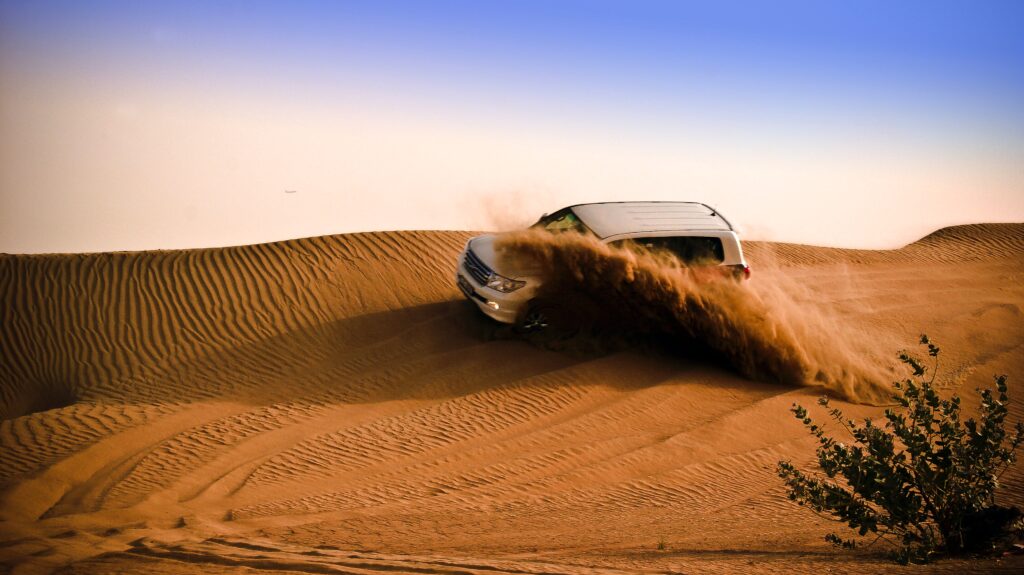
5. Discover the Dhayah Fort
Dhayah Fort, nestled in the emirate of Ras Al Khaimah, United Arab Emirates, stands as a monumental testament to the region’s rich history and cultural heritage. This 16th-century fortification, built atop a hill, offers breathtaking panoramic views of the surrounding palm groves, the azure waters of the Arabian Gulf, and the rugged Hajar Mountains. As the last remaining hilltop fort in the UAE, Dhayah Fort is not just an historical site; it is a symbol of the emirate’s resilience and strategic importance through the ages.
Historical Significance
Dhayah Fort’s historical significance cannot be overstated. It played a pivotal role in the defense against British forces in the early 19th century, notably during the General Maritime Treaty of 1820. The fort’s strategic location allowed for unparalleled surveillance and defense capabilities, making it a focal point in the history of the Arabian Peninsula’s coastal defense mechanisms.
Top Attractions at Dhayah Fort
The Ascent to the Fort: The journey to the fort itself is an adventure. Visitors must ascend a winding staircase of over 200 steps. This climb, though moderately challenging, rewards every visitor with increasingly impressive views, culminating in a 360-degree panorama at the top.
Architectural Marvel: The fort, constructed from mud bricks and local stone, exemplifies traditional Arabian fortification architecture. Its design and structure reflect the ingenuity of its builders, with features designed for both defense and habitation.
Panoramic Views: Once at the summit, visitors are greeted with stunning vistas that stretch across the emerald green date palm oasis to the blue waters of the Arabian Gulf. The contrast between the desert landscape and verdant farmland creates a mesmerizing visual spectacle.
Archaeological Site: The area surrounding Dhayah Fort is an archaeological site, with remnants of ancient settlements and tombs dating back to the 3rd millennium BC. These findings underscore the area’s long-standing significance as a hub of human activity and settlement.
Educational Experience: Informational plaques and guides offer insights into the fort’s history, architecture, and the broader historical context of Ras Al Khaimah and the UAE. This educational aspect enriches the visit, providing a deeper understanding of the region’s heritage.
How to Get There
Dhayah Fort is easily accessible by car from Ras Al Khaimah city center, making it a convenient excursion for both locals and tourists. The drive offers scenic views of the countryside and the mountains, enhancing the overall experience. There is ample parking available at the base of the hill, from where the pathway to the fort begins.
Visiting Dhayah Fort
Dhayah Fort is open to the public year-round, with no admission fee, making it an accessible attraction for all. The best time to visit is during the cooler months, from October to April, when the weather is pleasant for outdoor activities. Early morning or late afternoon visits are recommended to avoid the midday sun and to enjoy the site in the soft light of sunrise or sunset, which accentuates the fort’s beauty.
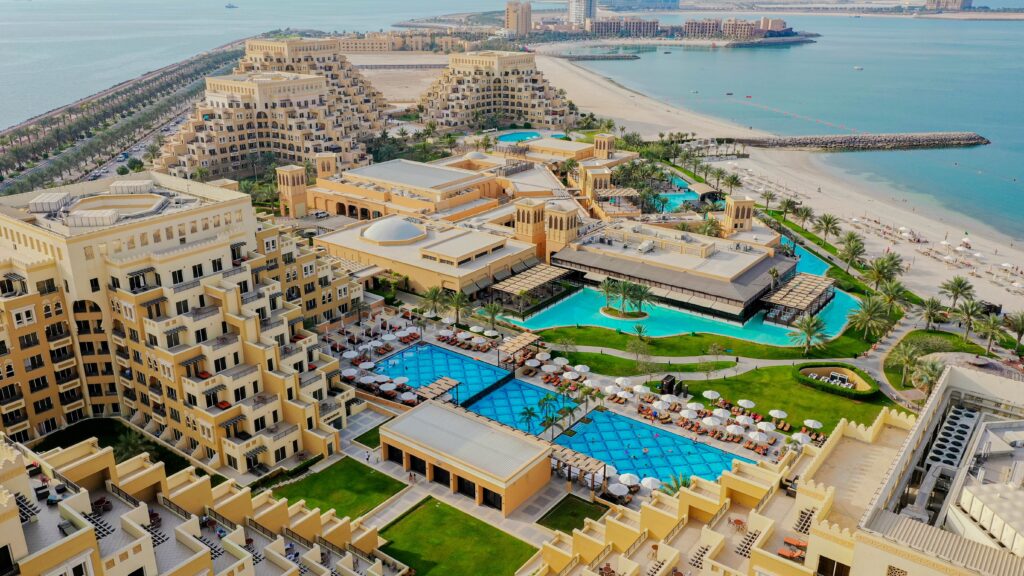
6. Visit Mohammed Bin Salim Mosque
The Mohammed Bin Salim Mosque in Ras Al Khaimah is not just a place of worship but a landmark that represents the spiritual heart and architectural beauty of the region. Situated in the heart of Ras Al Khaimah, this mosque stands as a testament to the rich Islamic heritage and cultural traditions. Named after a prominent local figure, the mosque is an integral part of the community, serving as a place for daily prayers, religious education, and social gatherings as well as among the top things to do in Ras al Khaimah.
Architectural Splendor
The mosque’s architecture is a harmonious blend of traditional Islamic design with modern influences, reflecting the evolving landscape of the UAE while staying rooted in its cultural legacy. Its minaret towers gracefully into the sky, serving as a beacon of faith and guiding worshippers to its doors. The intricate detailing on the mosque’s exterior, including Islamic calligraphy and geometric patterns, showcases the craftsmanship and artistic heritage of the region. The use of natural light, arches, and domes in its construction not only adheres to traditional mosque architecture but also adds to the serene and spiritual atmosphere within.
Interior Majesty
Inside, the Mohammed Bin Salim Mosque is equally impressive. The main prayer hall is spacious, accommodating a large number of worshippers, with separate areas for men and women. The high ceilings and ornate decorations create a sense of openness and tranquility, conducive to prayer and meditation. The use of marble, ceramics, and wood in the interior design adds to the mosque’s aesthetic beauty and spiritual ambiance. The mihrab, indicating the direction of the Kaaba in Mecca, is exquisitely designed, serving as a focal point for congregational prayers.
Cultural and Community Hub
Beyond its role as a place of worship, the Mohammed Bin Salim Mosque plays a pivotal role in the community. It hosts religious lectures, educational programs, and social events, fostering a sense of unity and belonging among the residents of Ras Al Khaimah. During the holy month of Ramadan, the mosque becomes a center for spiritual activities, including Taraweeh prayers and Iftar gatherings, drawing people from across the emirate.
Top Attractions and Activities
- Guided Tours: For those interested in architecture and Islamic culture, guided tours of the mosque are available, offering insights into its design, history, and the role it plays in the community.
- Community Events: The mosque regularly organizes events and lectures on various aspects of Islamic life, open to both Muslims and non-Muslims interested in learning about the religion and culture.
- Spiritual Retreats: The mosque provides a serene environment for personal reflection and spiritual growth, especially during Ramadan and other significant Islamic occasions.
Visiting Mohammed Bin Salim Mosque
Visitors to Ras Al Khaimah are encouraged to visit the Mohammed Bin Salim Mosque to experience its architectural beauty and spiritual ambiance. Respect for local customs and dress codes is advised when visiting the mosque. While the mosque is primarily a place for worshippers, it welcomes visitors interested in learning about the Islamic faith and the cultural heritage of the UAE.
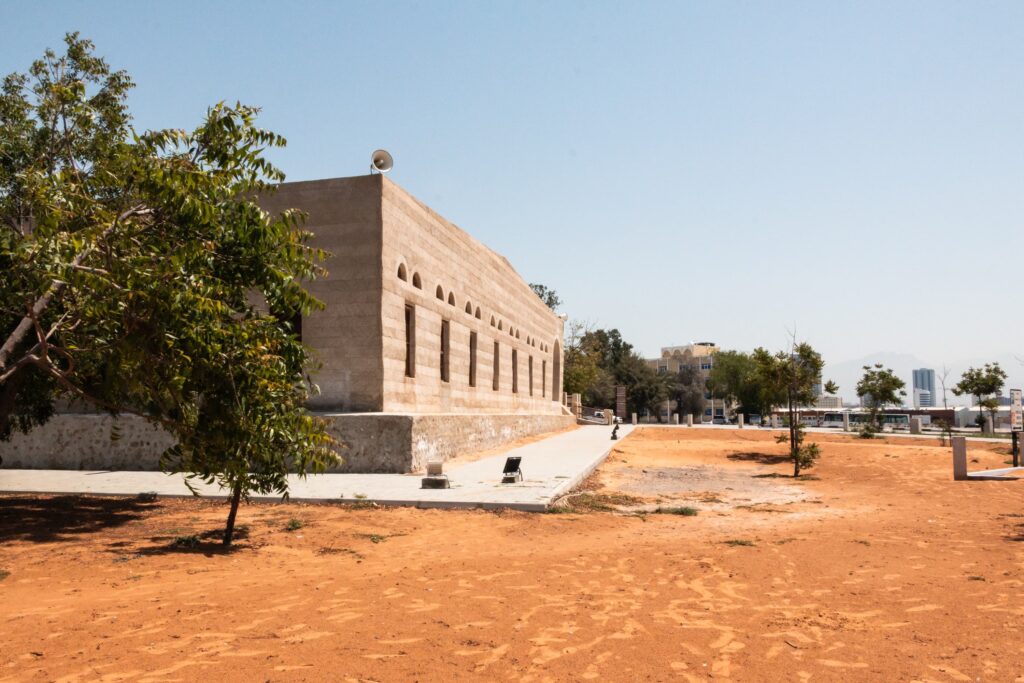
7. Experience Traditional Bedouin Life
The emirate of Ras Al Khaimah, with its rich history and cultural heritage, offers a unique glimpse into the traditional Bedouin life that has shaped the region. The Bedouins, nomadic tribes who have traversed the deserts of the Arabian Peninsula for centuries, are known for their resilience, hospitality, and deep connection to the natural environment. Today, Ras Al Khaimah provides visitors with the opportunity to explore and experience the essence of Bedouin culture through various attractions and activities that celebrate their way of life.
Experiencing Traditional Bedouin Life in Ras Al Khaimah
Bedouin Oasis Camp: The Bedouin Oasis Camp offers an authentic desert experience, allowing guests to step back in time and live like the Bedouins for a night or more. Situated in the heart of the desert, the camp is designed to mimic a traditional Bedouin settlement, complete with goat-hair tents, campfires, and Arabic carpets. Visitors can enjoy traditional meals cooked over an open fire, listen to folk tales under the stars, and participate in cultural activities such as henna painting and camel riding.
The Al Wadi Desert: The Al Wadi Desert, a part of the Ritz-Carlton Ras Al Khaimah, provides a luxury take on the traditional Bedouin lifestyle. Guests can stay in tented villas that offer modern comforts while retaining an authentic desert ambiance. The resort offers a range of activities that highlight Bedouin traditions, including falconry, horseback riding, and archery, allowing visitors to immerse themselves in the culture while enjoying the natural beauty of the desert landscape.
Bait Al Bedouin: Bait Al Bedouin is a cultural center dedicated to preserving and showcasing Bedouin heritage. Here, visitors can learn about the Bedouins’ nomadic lifestyle, their traditional crafts, and the importance of camels and falcons in their daily lives. The center also offers workshops on traditional Bedouin skills, such as weaving and pottery, providing a hands-on experience of the culture.
Among other top things to do in Ras Al Khaimah are Al Marjan Island, The Iceland Water Park and walking through the old parks and souqs to experience the local culture and heritage
You can visit official tourism site of the Government of Ras Al Khaimah for more details.
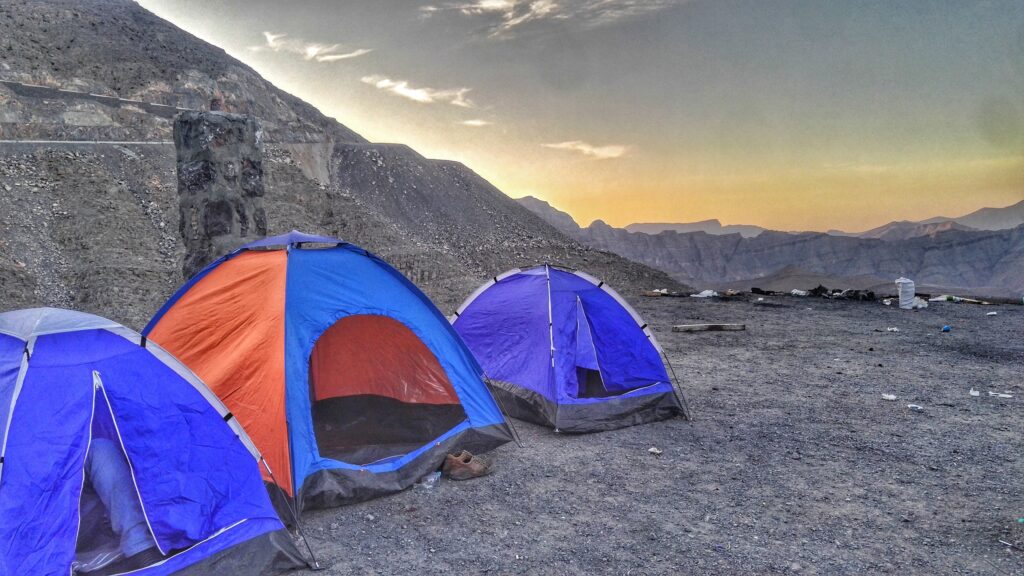
Pingback: Jabal Al Jais Phenomenon: Celebrate the Beauty of the UAE's Premier Summit - Travelling etc.
Pingback: Breathtaking Climates: The Majestic Jebel Jais Weather - Travelling etc.